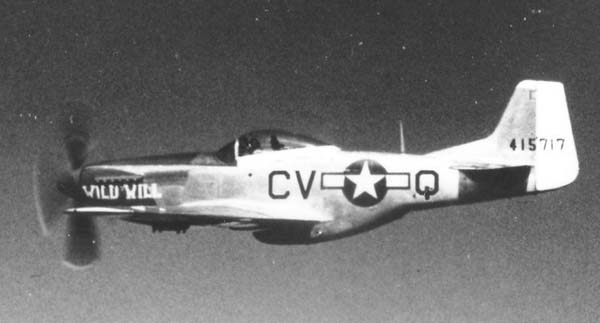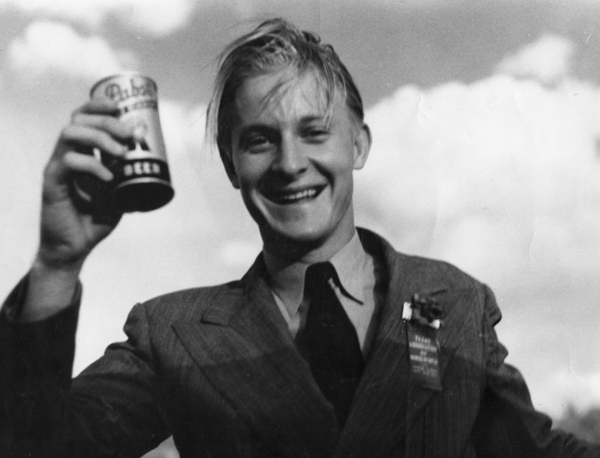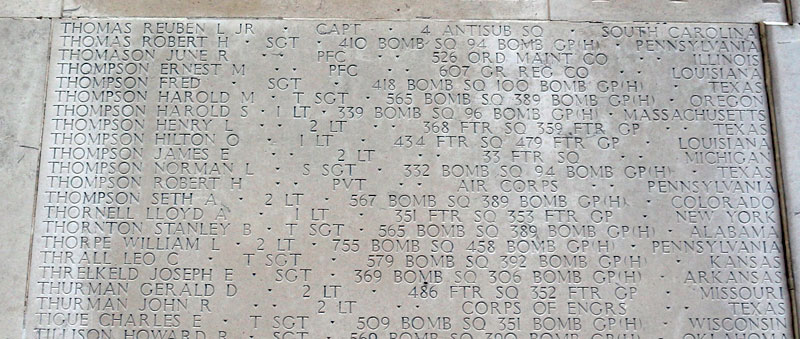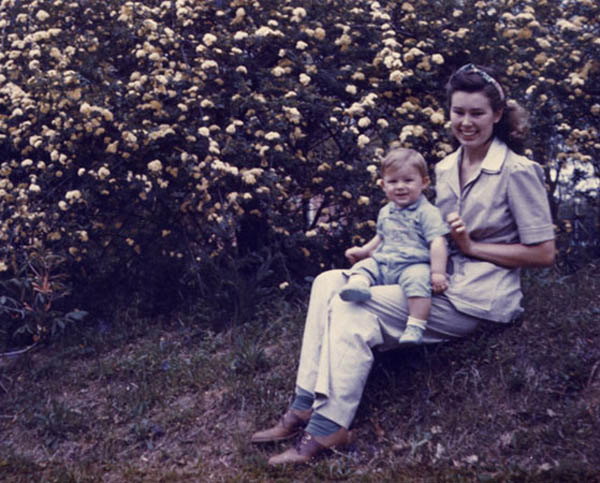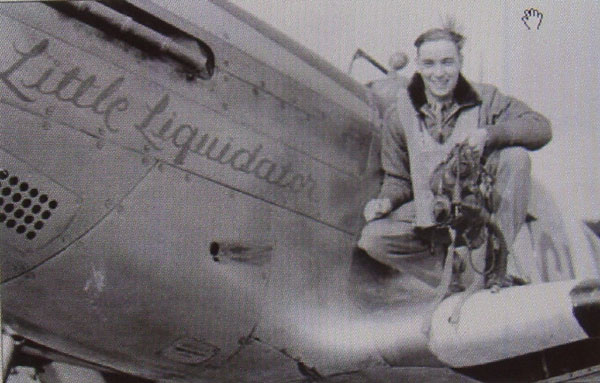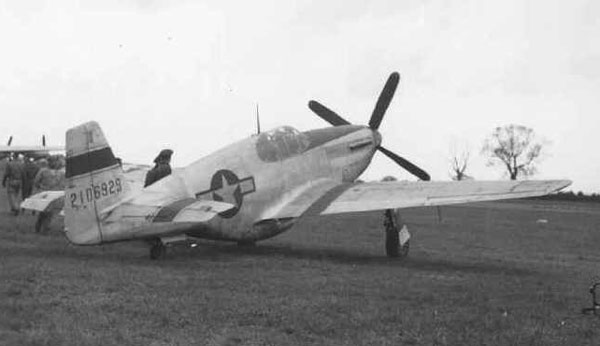P51 Mustang 42-106809 at Cayton Carr, Scarborough.
A P51 Mustang of the same squadron as the aircraft involved in this incident.
On 7th February 1945 three Mustangs took off for a training flight from their base at East Wretham at 14.14hrs. The aircraft were part of the 368th Fighter Squadron, 359th Fighter Group, USAAF. Two of the aircraft were new to the squadron and their pilots were to undertake tests on the guns and their performance at altitude. The third aircraft was an older aircraft and was infact listed as "war weary" and was declared not safe for combat flying; despite this it was mechanically sound. This third pilot was acting as an observer to the other two. They flew in a "V" formation during the gun test and climbed to 30,000ft for the second part of the test. Following this exercise the three aircraft descended to 21,000ft where they began to make a series of aerobatic turns. Now ninety minutes into the flight one aircraft left the formation and then called the other two pilots to say he was having trouble with his propeller. The other two pilots had banked away and could not contact the third pilot on the radio after this message and after searching for him they headed back to base. The problem with the propeller on the aircraft became worse and eventually it broke away from the aircraft while it was still at high altitude. Making a poor glider and possibly having sustained other damage by the propeller breaking away the pilot was left with little option but to bale out at height. With the engine having nothing to drive it screamed and the aircraft dived into the ground at high speed near Cayton, Scarborough. Wartime parachute technology was not as it is today, they worked well at controlling a descent but controlling direction was not what they were intended for. Baling out at this height with no oxygen undoubtably had its effect on the pilot and he probably passed out and coupled with what wind there was effecting his descent he unfortunately drifted some ten to fifteen miles out to sea. Despite the lifeboat being called out and ASR aircraft undertaking searches, sadly no trace of the pilot was ever found. This is still the case and he remains listed as missing. In the Cayton area the incident is still remembered but appears often incorrectly referred to as being a Spitfire, as is often the case with fighter aircraft of the period.
Pilot - 2nd Lt Henry L Thompson USAAF (O-813608), aged 26, of Tyler, Texas, USA. Missing. Commemorated at Madingley, Cambridgeshire.
Henry Thompson had a total of 708 hours flying experience when he died and whilst his service records have not yet been accessed it is thought he arrived in the UK in the latter part of 1944. Prior to enlisting he was a very talented horticulturist, garden designer and landscape architect with a fondness for roses. In his home town of Tyler, Texas he designed a rose garden which is thought he never saw develop as it did. The garden is still in existance today which makes a fine tribute to him. A memorial to him was created by its entrance some years ago. The rare colour photograph below shows Henry's wife Laura and his young son Larry in this rose garden almost certainly taken by Henry himself.
A fantasic photograph of Henry Thompson in happier times enjoying a beer.
Part of the memorial wall at Madingley Cemetery, Cambridge that commemorates Henry Thompson.
In June 2008 I was contacted by Henry Thompson's son Mr Larry Thompson and nephew Mr Erik Thompson. I would like to thank them both for their comments and to Mr Larry Thompson for all the photographs and information he has kindly allowed me to show on this webpage wihout which this account would not be as full.
The aircraft involved in this incident, "Little Liquidator" (the pilot is Lt George F Baker Jnr USAAF). The aircraft initially carried the code "CV-H" but was re-coded "CV-O" prior to its loss at Cayton. I have yet to locate and visit the crash site though the site is believed to be behind what is now the McCain's factory.
Of the other two pilots flying with 2nd Lt Thompson on this day 2nd Lt James Ferris was killed in a training accident on 17th June 1945 flying P-51b Mustang 42-106929 "CV-G" and named "Lola Lee". The photograph shown above shows this aircraft and was found on ""www.457thbombgroup.org"".
